Travel
Kamikochi: Japan’s car-free town that autumn hikers love
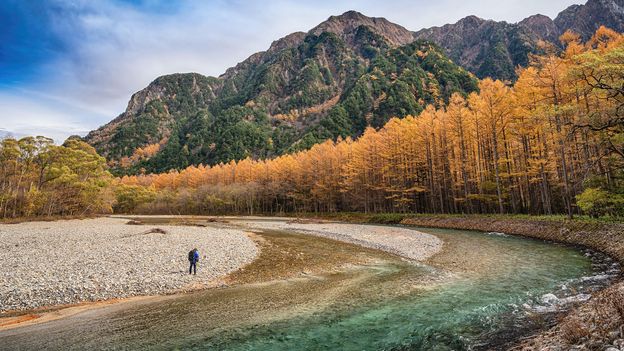
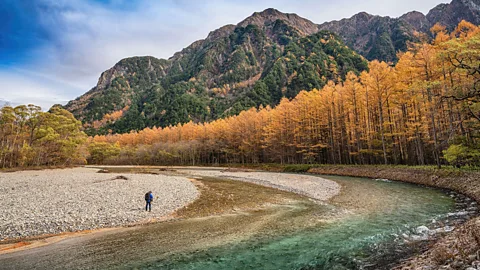 Alamy
AlamyWith a record 35 million foreign visitors expected in Japan this year, Kamikochi is an idyllic, relaxing break from some of the country’s more heavily touristed destinations.
Nestled in the Japanese Alps at 1,500m elevation, the seasonal resort town of Kamikochi is an idyllic, car-free getaway with cool, crisp mountain air, riverside hiking trails and an abundance of Japanese snow monkeys. There are no private homes, year-round residents or chain stores of any kind – no McDonald’s, Starbucks or Burger King; instead, it’s known as an escape from the enervating heat that grips most of Japan in the summertime and for its abundant, sublime autumn colours that peak in October. I loved it immediately, though my teenage sons, Leo and James baulked at the communal shower arrangement in our hotel.
Their mood brightened, though, as I explained that our agenda for our three-day, two-night stay included nothing but hiking, eating and relaxing. “No museums, no temples?” James gleefully asked. We’d arrived in Kamikochi roughly mid-way through a month-long trip around Honshu, Japan’s largest island, and by this point the boys had seen far too many temples, shrines and museums for their tastes. Kamikochi, we reassured them, would be a holiday from our holiday in a simple place with a few clusters of hotels, restaurants and shops all clustered along the Azusa River.
The quest to find pristine natural environs unspoiled by mass tourism long predates the social media era. In his 1896 book, Mountaineering and Exploration in the Japanese Alps, the English missionary, climber and conservationist Reverend Walter Weston echoed the sentiments of an unnamed Japanese writer who complained of “foreign tourists who come to his country, and after rushing through it at the rate of 40 miles an hour then hurry home to record their impressions and pose as authorities on what they have only glanced at”.
In his writings and lectures, Weston popularised the term “Japanese Alps” and put the area that became the resort town of Kamikochi on the radar of international tourists. The town’s popularity as a holiday destination for Japanese tourists spiked in 1927 with the release of Kappa, a novel set in Kamikochi written by Ryunosuke Akutagawa, one of Japan’s most famous writers. In 1934, Chūbu-Sangaku National Park, home to Kamikochi and 10 of Japan’s 21 peaks over 3,000m, was established and the area became known as the “most beautiful valley in Japan“, inspiring comparisons with California’s Yosemite National Park.
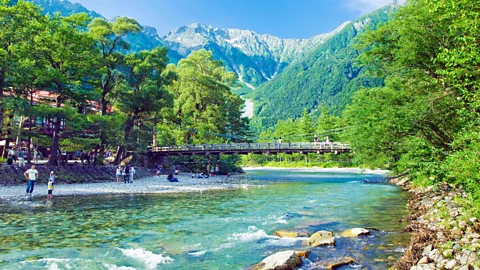 Alamy
AlamyWith all the media hype about overtourism and rising visitor numbers in Japan, I hoped Kamikochi would be a relaxing break from some of the more heavily touristed destinations like Kyoto, Osaka and Tokyo, which we’d visited, and enjoyed, earlier in the trip.
In the nearby gateway city of Kanazawa, I asked our volunteer guide, Michiko Kitaguchi, whom we found through the excellent Kanazawa Goodwill Guide association, about Kamikochi, and she said that in Chinese, Kamikochi fittingly means “a place where the god descends”. Her favourite time of year in Kamikochi is autumn when the colours in the valley are spectacular.
Green Getaways
Green Getaways is a BBC Travel series that helps travellers experience a greener, cleaner approach to getting out and seeing the world.
“I am a Kamikochi lover who goes there every year to feel the energy of nature,” she said. “The sounds of the river flowing, the autumn-coloured mountains of the Hodaka, the golden Japanese larch forest by the river is really stunning in the fall.”
Kamikochi has been a green getaway since 1975 when private cars and motorcycles were banned in response to rising traffic and visitor numbers and a desire to preserve the place’s tranquillity. In fact, conservation efforts began a century earlier, in 1875, when the former logging town banned felling trees in the area to preserve its natural beauty. Laws were passed to prevent the removal of alpine plants in 1909, and it was the first area in the country to be formally designated as a “protection forest” in 1916. In 1963, officials established the Kamikochi Beautification Association to address the issue of littering and poor tourist etiquette more broadly. In the ‘70s, the number of hotels and inns was capped at 17, the same number that exist today (along with a pair of campsites; there are no Airbnbs).
The place has an egalitarian appeal in that almost everyone arrives by bus – if you try to drive, you have to park about half an hour away and take a bus anyway; and the only other option is to hike in or take a taxi, though few visitors opt to do this. A hybrid bus route to Kamikochi was established in 1994, leaving from Takayama, our prior stop, and also Matsumoto, famous for its striking 16th-Century castle, and tour buses were banned in 2005.
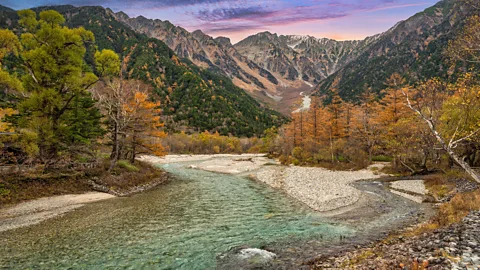 Alamy
AlamyAs we exited the bus terminal with our baggage, I was glad that we’d chosen a nearby hotel: the Nishi-itoya Mountain Lodge, which has private rooms and hostel-style bunk rooms. Other options, like the historic Tokusawa Inn, founded in 1885, require a one- to two-hour hike from the bus terminal with your luggage.
Top tips:
When to go: Kamikochi is open from 27 April to 15 November. Come for wildflowers in late spring, perfect weather in summer and sublime autumn colours in October.
What to do: Hiking and birding are the main attractions. There are several flat trails along the Azusa River as well as more challenging hikes for serious mountaineers.
Where to eat: Almost all visitors eat breakfast and dinner at their hotels as rooms come on a half-board basis. For lunch, try Kamonjigoya for delicious grilled fish and fresh soba noodles; and Tokusawa Inn for outstanding curries and fried rice dishes.
Where to stay: The Nishi-itoya Mountain Lodge is an affordable option in the centre of town with private rooms and hostel-style accommodation. If you’re not on a budget, the grand, old Kamikochi Imperial Hotel, founded in 1933, is a classy and well-situated choice.
We walked across the Kappa bridge, named after Akutagawa’s novel, and immediately slalomed through a mob of selfie stick-toting tourists. I reckoned that Kamikochi wasn’t as off-the-beaten path as we’d hoped, though it was noon on a Saturday, which is rarely an ideal time to have a place all to yourself.
We drew up a plan to take three easy hikes, one for each day of our visit, and avoid all the steep knee-shattering treks up Mt Jonen, Mt Chogatake, Mt Oku-Hotakadake and others. (The national park has 40 mountain peaks with altitudes of more than 2,400m.) On our first hike to Myojin Pond, I felt the wish-I-could-bottle-it travel high I live for as a compulsive traveller as we met one troop of mischievous Japanese snow monkeys after another while hiking along and near the river. It was a balmy 18C and the crisp mountain air was a welcome relief from the steamy streets of Takayama. Kamikochi is a major birding destination, and we could hear what a birder told me were Japanese bush warblers singing what sounded like, “hoo-ke-kyo”.
Kamikochi drew 1.3 million visitors, mostly Japanese, in 2023. Most years, 100 million or more visit Mt Fuji, which, along with Kamikochi, is the only other destination designated by Japan’s Cultural Affairs Agency as both a Special Place of Scenic Beauty and a Special Natural Monument. We were also pleased to discover that many of Kamikochi’s visitors are day-trippers who disappear by late afternoon. After the initial crush of tourists we’d seen at the Kappa bridge on our first afternoon, Kamikochi didn’t seem overly touristy or spoiled.
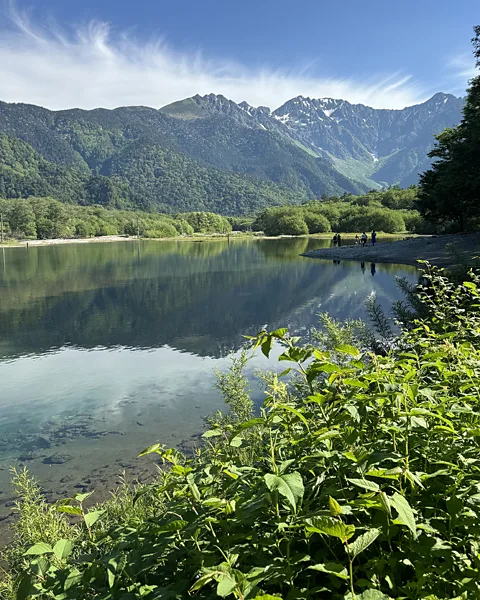 Dave Seminara
Dave Seminara“Where do you live?” I asked one of the friendly restaurant servers at our hotel. “In a dormitory for workers right back there,” she replied, pointing behind the hotel’s annex. She explained that Kamikochi is only open to visitors from 27 April to 15 November because it’s too cold in winter to attract guests. On those dates, elaborate opening and closing ceremonies take place, presided over by Shinto priests who give thanks to nature as revellers indulge in cups of hot sake. There’s also a popular boat festival in October, but in the offseason, it’s a ghost town and workers like our server migrate elsewhere.
I asked if she enjoys living in such a transient place, and the young woman pulled out her phone to answer my question. “Last week, I went on a long hike and took these,” she said, swiping through some striking photos of Taisho Pond, a large body of water flanked by volcanic, snow-capped Mt Yakedake, which erupted in 1915, effectively damming the Azusa River and creating this picturesque pond. “This is why I’m happy here.”
Taisho Pond, the end point of our final hike, was indeed stunning. The craggy mountains with their serpentine dustings of snow looked like something out of a fantasy world created by Akutagawa, the writer who took his own life at age 35 shortly after the publication of Kappa. In the novel, the protagonist visits Kamikochi in search of tranquillity, but finds the place inhabited by a strange race of 1m-tall, sumo-loving water spirits he called kappas.
We encountered nothing so strange, though my sons strongly objected to the nudity in the onsen (natural hot springs). But we found that Japan’s conservation efforts to preserve the wild beauty of Kamikochi that seduced Weston, Akutagawa and others have largely succeeded. Indeed, there aren’t many places left where you can enjoy a car-free holiday in a place where you’re guaranteed to hear birdsong rather than car horns and see snow monkeys but no McDonalds.


/cdn.vox-cdn.com/uploads/chorus_asset/file/24435784/tokyostrava.jpg)







